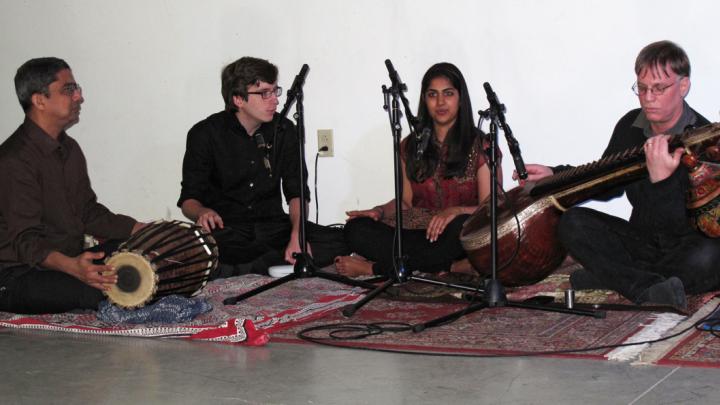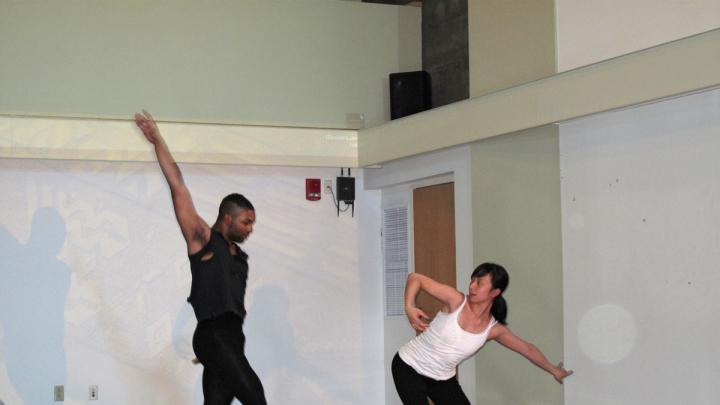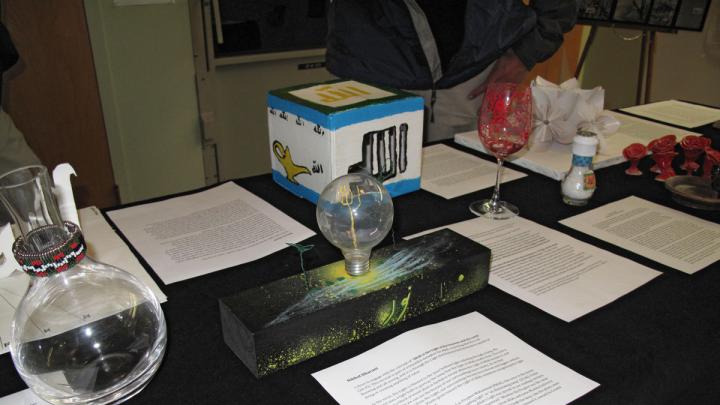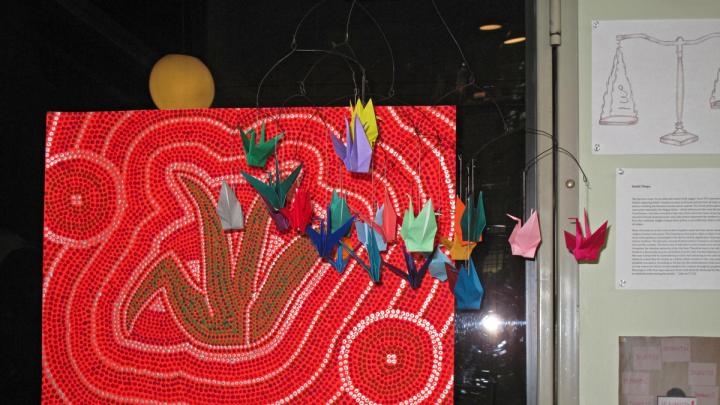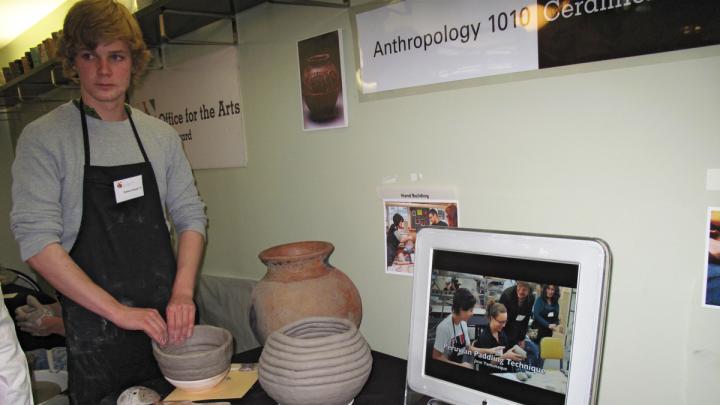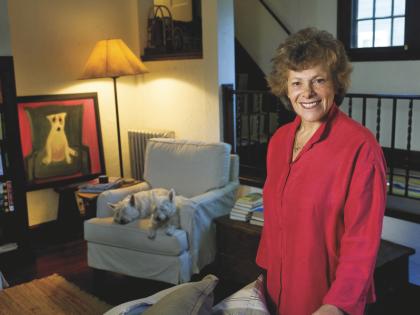As part of the campus-wide Arts First celebration, Arts @ 29 Garden was transformed into a giant, interactive undergraduate art gallery on April 27, and a survey of the scene showed that Harvard is taking the “arts” in the phrase liberal arts literally. (The whole building is a new arts “lab” space “intended to support and enable creativity, collaboration, experimentation and art-making amongst faculty, students and visiting artists.”)
In the center of the cavernous room on the building’s bottom level, Vidya Rajan ’13 and Louis Coppersmith ’14 sat cross-legged on the floor, tapping their hands in time as their peers played South Indian lutes and pleaded, through their song, to the Hindu god Rama for forgiveness. Later, in the same space, Thuy Phan ’12 twisted and turned her sinewy body in front of a digital screen projecting scenes of Madagascar, as she and her classmates captured the wonders of the island’s spiders through three dances: “Silk,” “Sex,” and “Poison.”
Upstairs, with the help of a video projector, Ebone Ingram ’12 sang all four parts of the four-part harmony in the Four Tops’ song Reach Out (I’ll Be There). In an adjacent room, a supernatural-looking light-bulb sculpture by Nikhat Dharani ’13 was on display—his representation of a phrase he learned in a class on Muslim culture, meaning that Allah “is all-knowing and all-seeing, and it is through His Light that humans find themselves capable of doing or creating anything of value,” he wrote on a sheet of paper adjacent to his creation.
Breaking Boundaries: Arts, Creativity, and the Harvard Curriculum showcased student art created in courses in a wide range of subjects: religious ideas and artistic expression (Culture and Belief 12: “For the Love of God and His Prophet”); the Big Bang and the origins of stars in the solar system (Science of the Physical Universe 20: “What is Life? From Quarks to Consciousness”); understanding the abstract concept of beauty (Freshman Seminar 35e: “What is Beauty?”). Students danced, sang, performed improvisational comedy, made clay sculptures, and displayed a vast array of artworks created in their courses, all funded by grants from the Elson Family Arts Initiative—a grant that enables professors to incorporate significant art‐making activities and assignments.
In professor Richard Wolf’s Music 190gw: “South Indian Classical Music,” students learned to play the veena (South Indian lute), the mridangam drum, and the saxophone, ultimately using their skills to perform two pieces, Kripaju and Varanarada, by the Hindu saint and composer Tyagaraja during the exhibition.
Coppersmith, who had never been exposed to South Indian music before, said the best part of Wolf’s class was going into it knowing nothing about the subject and ending it with a full-fledged performance. “It’s interesting because it’s based on all these melodic patterns and hand gestures to keep time, nothing like Western classical music,” he said, “Figuring out what’s going on in the music and figuring out what makes karnatik music [the classical music art form of South India] musical were the coolest parts of the course for me.”
In African American Studies 182: “From R&B to Neo Soul: Black Popular Music,” an Elson grant enabled Jones professor of African-American music Ingrid Monson to add a new element to her course: three workshops, two focused on dance and one on singing. As a result, she offered students the option to submit a performance or a multimedia presentation in lieu of a final paper. More than half of the class’s 116 students took her up on the offer, resulting in a four-and-a-half-hour performance of material from the course.
“What I learned from this is that giving students the option to have performative projects really opens up their creativity and allows them to engage with the materials of the course in a way that they can’t within an ordinary term paper,” Monson said. “I’m never going to teach this course again without doing something like this.”
